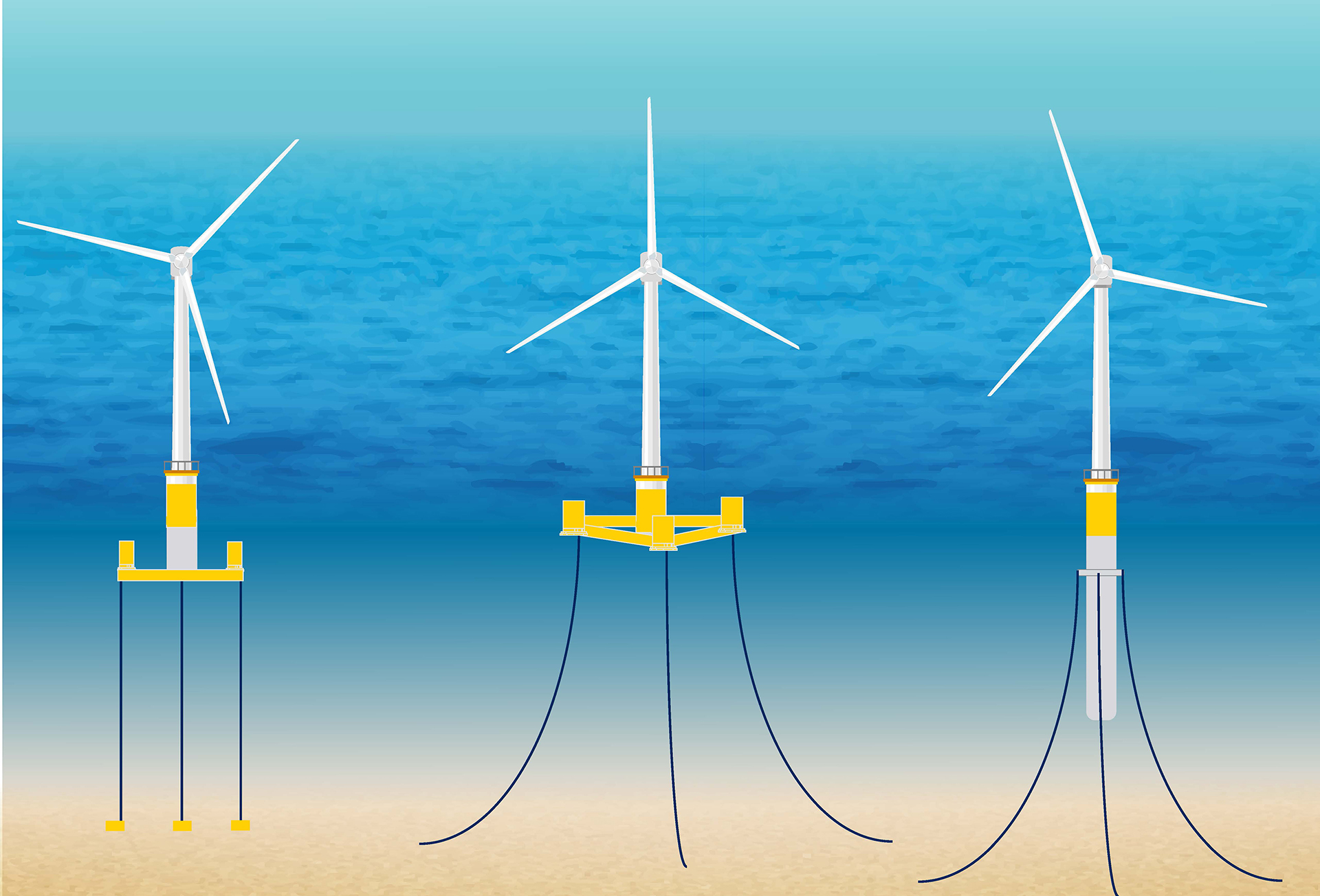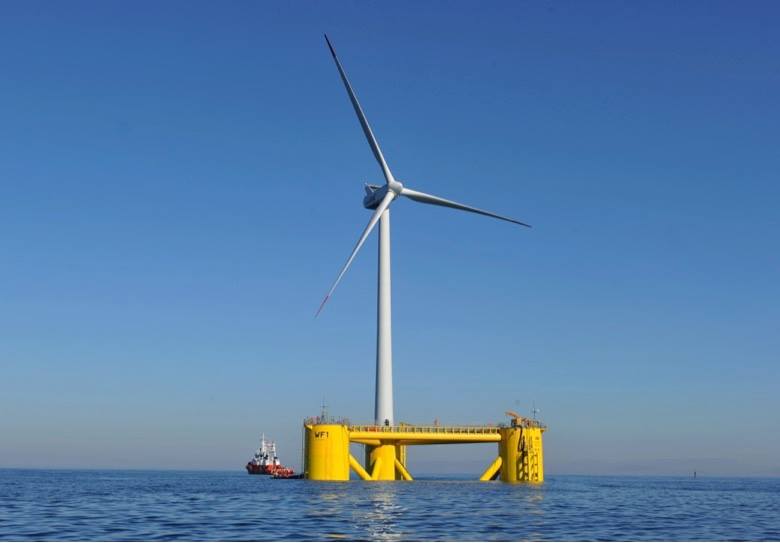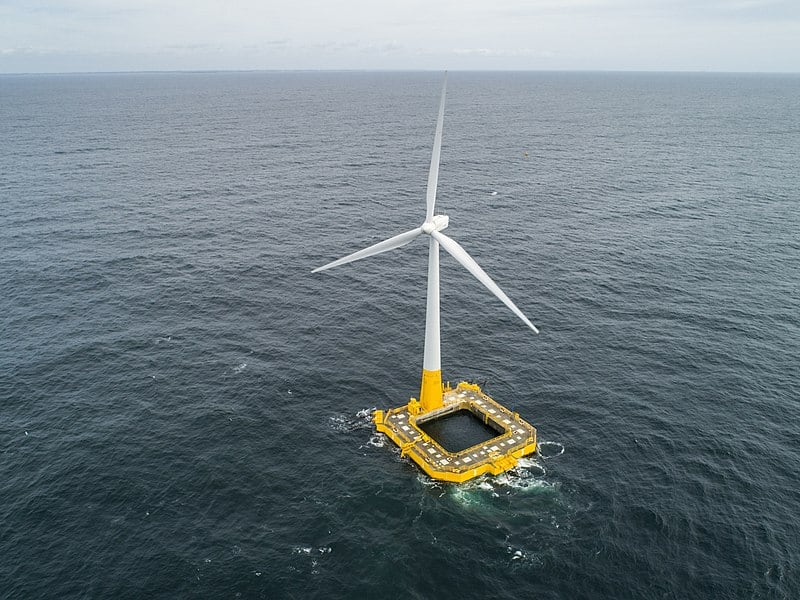
- In the last decades the construction of wind farms especially offshore worldwide spread rapidly and
Wind energy has become an important factor for driving sustainable development. - Floating wind turbines are offshore wind turbines that are put on a floating frame to generate power in sea depths where fixed-foundation turbines are not viable.
- Floating wind farms have the potential to greatly enhance the amount of sea area available for offshore wind farms, particularly in nations like Japan and Indonesia that have limited shallow waters.
In the last decades the construction of wind farms especially offshore worldwide spread rapidly and
Wind energy has become an important factor for driving sustainable development.
The land is getting narrower and the noise is getting louder then the placement of wind turbines at sea is another alternative reasonable and rational. Floating wind turbine with the appropriate spar-submersible type shallow waters because this type is quite stable at that time on wave conditions and wind speed fluctuations.
What is Floating Wind Turbine?

Floating wind turbines are offshore wind turbines that are put on a floating frame to generate power in sea depths where fixed-foundation turbines are not viable. Floating wind farms have the potential to greatly enhance the amount of sea area available for offshore wind farms, particularly in nations like Japan and Indonesia that have limited shallow waters. Wind farms located further offshore can also help to reduce visual pollution, improve fishing and shipping channels, and reach stronger and more constant winds.
This technology, largely adapted from the oil and gas industry, is already successful at the prototype stage, with more extensive test and demonstration projects underway. Currently, the most cost-effective installation method appears to be a “tow-out” concept, in which the foundation and turbine are constructed in port and then towed out to an anchor site. This method addresses several of the infrastructure and logistical challenges associated with constructing and maintaining offshore wind farms—the subject of a subsequent blog in this series.
Other nations are also working on innovative floating offshore wind technology solutions. The first project to scale up—using multiple large (6-megawatt capacity) offshore wind turbines on floating foundations—is Hywind Scotland, which uses a spar buoy foundation design that has one large ballast-stabilized spar. France also has an R&D program with three demonstration projects in early stages of development.
READ MORE :
- Which Area Is The Best for Indonesia Offshore Wind Turbine?
- This is How to Maintenance The Wind Turbine
Floating Wind Turbine Design Concep
Eolink

A single point mooring mechanism is used by the Eolink floating wind turbine. This French business situated in Plouzané has patented a semi-submersible floating hull with a four-mast pyramidal configuration. The turbine is supported by two upwind and two downwind masts. It provides additional blade clearance and evenly distributes stress. The turbine spins around its single mooring point to face the wind, unlike most floating wind turbines. The mechanical and electrical interface between the turbine and the seabed is ensured by the pivot point. In April 2018, the Eolink grid linked its first 1/10th scale demonstrator of a 12 MW wind turbine.
Ideol

Ideol designed a steel floating substructure based on Ideol technology for a 3.2 MW NEDO project in Japan, which was fully coated in a dry dock before wind turbine installation.
Engineers at Ideol have created and patented a ring-shaped floating foundation with a central opening mechanism (Damping Pool) for optimizing foundation + wind turbine stability. As a result, the sloshing water in this central aperture dampens floater oscillations caused by the swell. To keep the system in place, foundation-fastened mooring lines are simply affixed to the seafloor. This floating base is suitable for all types of wind turbines and has smaller dimensions. This floating foundation, which can be made of concrete or steel, enables local building near project locations.
READ MORE :
SeaTwirl
SeaTwirl is working on a vertical axis floating wind turbine (VAWT). The idea aimed to store energy in a flywheel, allowing energy to be generated even when the wind has ceased blowing. The floater is a SPAR solution that rotates in tandem with the turbine. In the hub region, the design reduces the requirement for moving parts and bearings. SeaTwirl is situated in Gothenburg, Sweden, and is listed on the First North European growth market. In August 2011, SeaTwirl launched its first floating grid-connected wind turbine off the coast of Sweden. It was put through its paces before being deactivated. SeaTwirl debuted a 30 kW prototype in the Swedish archipelago of Lysekil in 2015, which is connected to the grid. In 2020, the company hoped to scale up the concept with a 1MW turbine. The concept can be scaled up to sizes much above 10MW.
While floating technologies may have the potential to become more cost-effective than traditional bottom-mounted foundations in the long term, significant research is needed to reduce costs and to validate the engineering tools used to design and optimize floating foundations. DOE has established the Offshore Wind R&D Consortium to conduct research on floating foundations and other technical innovations.
References :
[2] WIND ON THE WAVES : FLOATING WIND POWER IS BECOMING A REALITY
[3] What are Floating Wind Turbines? A Practical Guide to Advantages and Types




